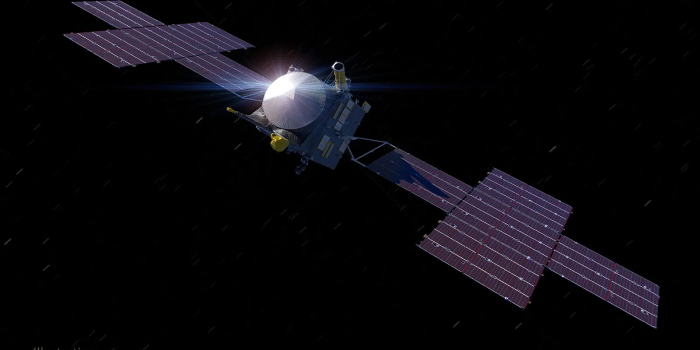NASA’s Psyche mission has started a ground-breaking deep space communication experiment while investigating a strange asteroid. The mission team has innovated using an infrared laser for data transmission, departing from conventional radio wave techniques.
Psyche, located 1.5 times the distance between Earth and the Sun, travelled 226 million kilometres (140 million miles) to test the new communication technology. Initially, the spacecraft used NASA’s Deep Space Network to transmit its engineering data via radio waves.
However, the researchers chose to test the Deep Space Optical Communication technology in addition to conventional techniques. The test on April 8 yielded findings that were better than expected. Download rates of up to 25 Mbps were attained, significantly exceeding the target of “at least 1 Mbps” and boasting speeds 10 to 100 times quicker than traditional radio transmissions.

“We downlinked about 10 minutes of duplicate spacecraft data during a pass on April 8,” said Meera Srinivasan, NASA’s Jet Propulsion Laboratory (JPL) project operations head, beaming with delight. This demonstration of how optical communications can link with a spacecraft’s radio frequency communications system marks an important milestone for the project.

Although the spacecraft faced difficulties, including cloud interference during earlier tests closer to Earth, the latest success highlights the system’s potential. Ryan Rogalin, the project’s JPL receiver electronics lead, said, “We’ve learned a great deal about how far we can push the system when we do have clear skies.”
Moreover, the team intends to carry out additional testing in June, when Psyche will be 2.5 times the distance from Earth to the Sun, or the largest distance between Mars and Earth. If this project is successful, a data-intensive network between Earth and Mars could be possible, which could reshape interplanetary communication.


